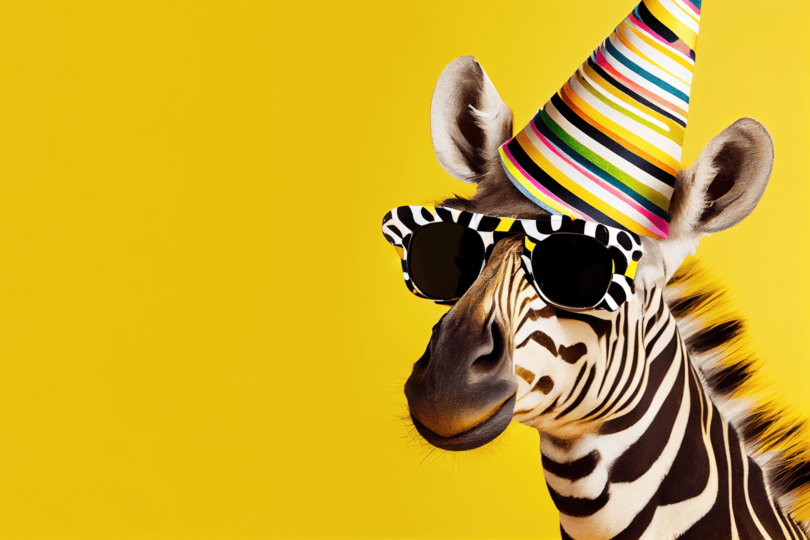
How to Design a Logo
Designing a logo is one of the most crucial parts of branding your business. Having a logo that instantly makes your brand recognisable is not an easy task to accomplish, especially if you have no prior logo designing experience.
If you want to learn how to design a logo, this article provides a beginner-friendly DIY logo design tutorial that walks you step by step through the process of how to create a logo for your website. The guide will help you understand the typical logo design process with ease. It also includes a quick breakdown of some of the most popular free online design tools you can use for creating a logo online.
Why Do You Need A Logo?
You have just started your business and are trying hard to attract more clients. The best way to find new customers is to create a fabulous logo. It is the first thing people see when they visit your website, shop, or office. Similarly, it also occupies a prominent position on your business cards, packaging, brochures, and pamphlets, etc. A logo is just like a photograph on your dating profile. Therefore, it should be beautiful and memorable. It should also entice people to take action and do business with you.
People usually decide to learn more about your brand after seeing your logo. A poorly designed logo will put them off your business and they will start looking somewhere else for the services they need.
The 10 Step Logo Design Process
Creating a logo can be a long and drawn out process including a lot of steps. We are going to explain each of these steps in detail for you to design an amazing logo for your brand.
1
Discover Your Brand’s Identity
The first step in the logo design process is to discover or define your brand’s identity. What is the core value of your brand? What your business is all about? What makes you better than your competitors? Are you offering something new, unique, or special to your customers?
You will only be able to make design and colour choices which complement your brand if you answer all of the above questions before you proceed.
2
Get Some Inspiration
When designing a logo, you should look for as much inspiration as possible. Inspiration can come from anywhere or anything. For example, logo and design-centric websites such as 99Designs is a great source of inspiration. They contain thousands of brilliant and highly inspirational logos for all kinds of businesses. You can also get ideas from websites like DeviantArt and Dribbble.
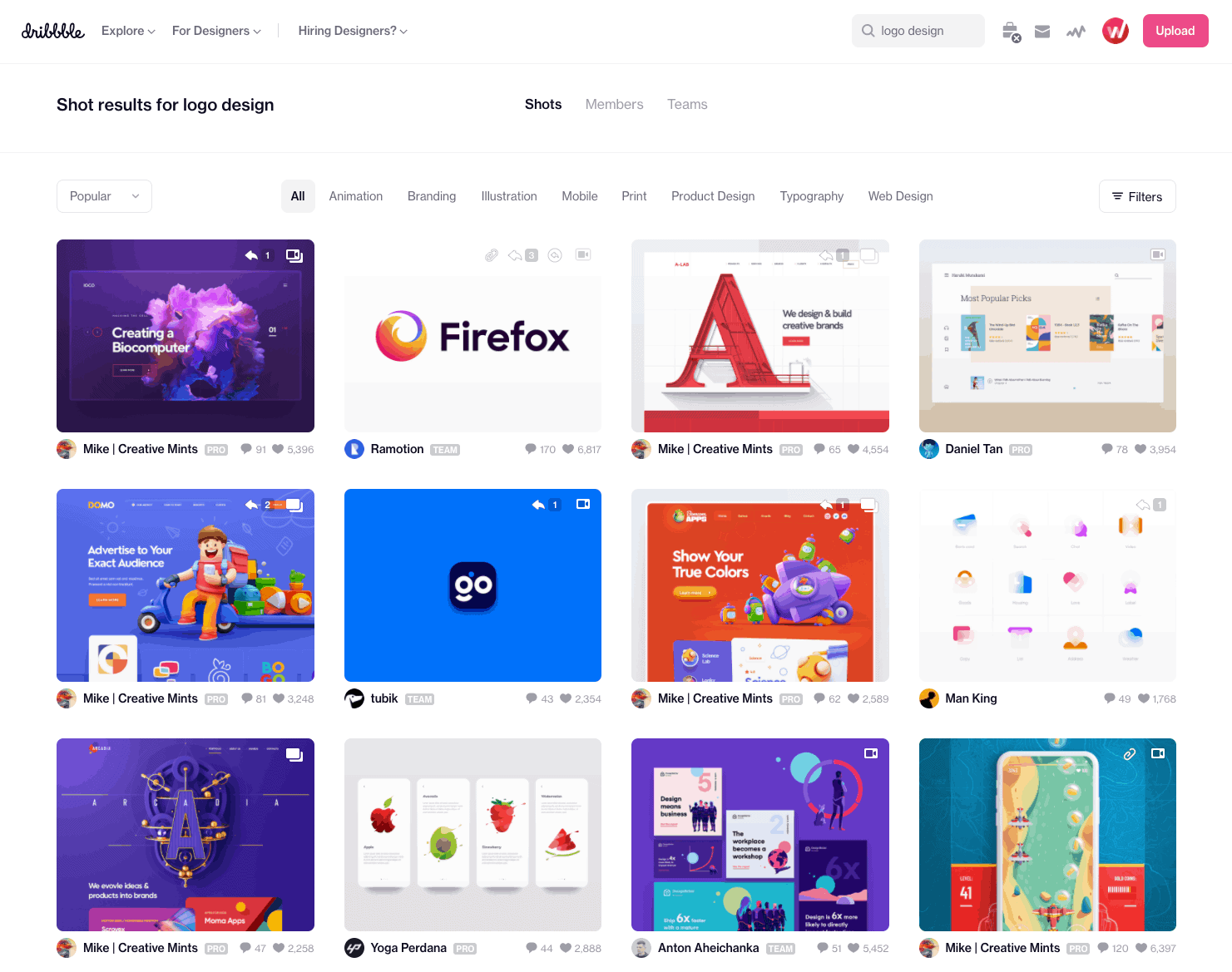
Logo’s on Dribbble
Another great method to get design ideas is to observe your competitors’ logos. Learn more about the techniques they have employed to create their logos. Pay special attention to logos that catch your imagination. You don’t necessarily need to copy their style but it will give you a fair idea of the logo design trends prevalent in your specific industry. By combining a number of ideas and trends, you will be able to design a logo that is different from all of your competitors.
3
Do Your Research
Research guarantees the success of every project and logo design is no exception. You have to research several things such as: Who your target audience is? What do they want from you? What are their favourite brands? How you can win them over? Similarly, talk to your current customers about their buying choices, lifestyle, and opinion about your products. It will help you a great deal in understanding your business’s purpose and how to reflect it in your logo design.
Brainstorm Words That Define Your Brand
What are the words you want to include in your logo? The best way to find terms that best describe your business is to brainstorm yourself. Your family and friends can also give you a lot of excellent suggestions and ideas. You can always leverage the internet as well.
For instance, just type “food” in thesaurus.com if you own a restaurant. The number of incredibly descriptive synonyms will blow your mind. It is even possible to start new searches by clicking on the suggestion results. Dig as deep as possible and narrow down your options until you find the terms that narrate your brand’s story.
4
How to Choose a Logo Design Style?
By now, you must have gathered a lot of inspiration in addition to having a clear idea of what your brand is about. It is now time to convert your idea into reality.
Plenty of design choices and the pressure of creating a great logo can be overwhelming for a new designer. Always proceed slowly, steadily, and with a calm mind. Whether or not your logo will be a success largely depends on its design aesthetic. Therefore, you have to be very careful and focused at this stage of logo design.
The following are some of the design styles you can incorporate in your logo:
Retro Vintage
Retro and vintage logos are really popular – for a good reason. Such logos instigate nostalgia among people in addition to reminding them of the days gone by. A retro logo informs people that you adore your history and always sell your products and services the right way. Vintage logos are aesthetically pleasing as well.
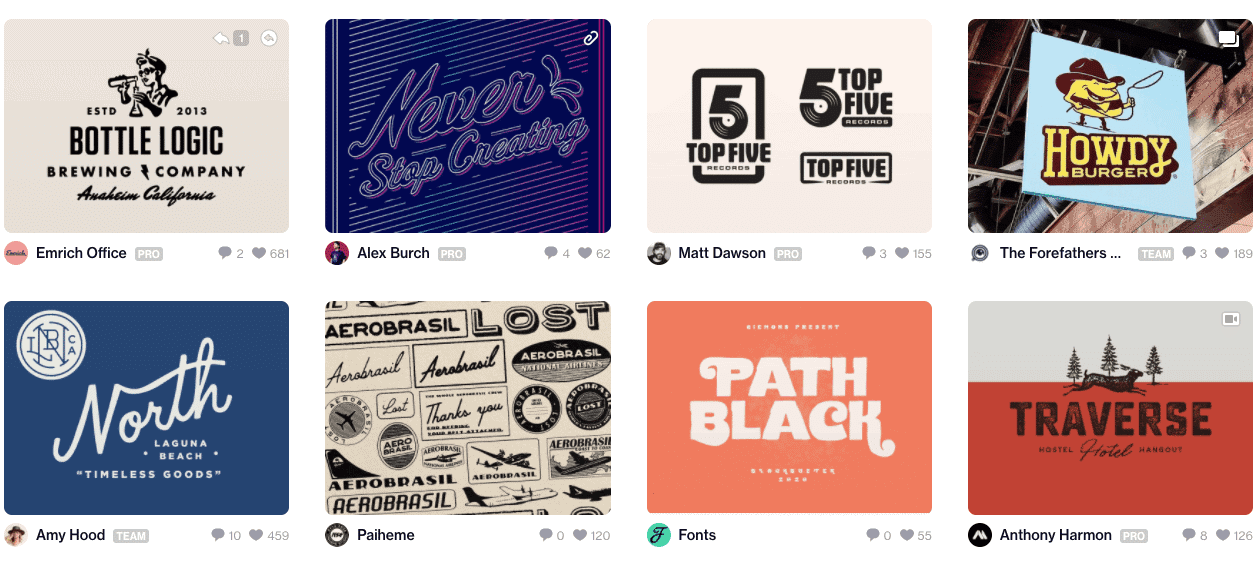
Classic Logos
If you are looking for a timeless design then a very good option is a classic logo. Such logos help you reach a broader audience because they remain relevant forever as compared to trendy logos. They also project you as very humble and reliable people who genuinely care about their customers. Classic logos are always simple and devoid of flashy fonts, graphics and risky colour palettes.
Fun and Quirky
If your customer base mostly consists of younger people, you could pick a fun and quirky logo for your brand. This type of logo creates an approachable and helpful atmosphere using various illustrations and symbols. Fun logos tend to be very cute and colourful. For example, you can exhibit the comical side of your business by creating an adorable illustration or a whimsical mascot.
Modern and Minimalist
Modern and minimalist designs are perfect for showcasing the modern and fresh approach of your business. Minimalist logos are usually bare and sleek because they mostly use simple lines and minimal details, leaving a lot of whitespaces. You can express how modern, up-to-date, cool, and caring you are by using a modern logo.
Handcrafted Logos
If your brand is all about handmade quality and distinctiveness, a handcrafted style logo could be a good option. You can explicitly explain the purpose of your business by combining handcrafted and retro styles as well. On the other hand, combining handcrafted and quirky styles will result in a bright and youthful logo. Similarly, you can impart a sophisticated look to the logo by mixing handcrafted and modern styles.
5
What Are The Different Types of Logo?
The next and one of the most important steps in the logo making process is to choose the right type of logo. There are lots of types of logo, but below I mention the most poplar 7 types. You can use any of these for your company if it complements the overall aesthetics, theme, and name of your brand.
Wordmark Logos
A wordmark logo only has your company name. Often referred to as logotype, it is devoid of monograms or symbols. You should go for this type of logo if you have a distinctive or very short business name. The best examples of wordmark logos are Google, Burger King, Canon, Coca Cola, Calvin Klein, Braun, and so on.

Monograms
If your logo has only one to three letters, it is a monogram. Such a logo comprises of the company’s first three letters or initials in the form of a symbol with the full name below. Many famous companies such as BMW (Bayerische Motoren Werke), London Symphony Orchestra (LSO), Small Scale Cycles (SSC), and SSG Security (SSG) have this kind of logo. Companies like Luis Vuitton (LV) and Warner Bruce (WB) have dropped the third letter but still have amazing monogram logos.
Combination Logos
The combination logo, as the name suggests, has a combination of a symbol and a wordmark. Using two different design elements together in your logo will make it more recognisable. Similarly, overlapping two different pictures into a logo is also a clever way of interpreting your ideas or concepts.
Combination logos are also the most common types of logos. Some of the best combination logos in the world are that of Target, Huawei, Nike, Amazon, and Adidas.
Our own “Webpop Design” logo is a good example of a combination logo.
Logo Symbols
A logo symbol consists of an image to represent your company. They are the most easily recognisable logos as they provide a unique look to your brand. Logo symbols can either be complex or simplistic. You can even combine a logo symbol with a wordmark to further enhance your brand recognition.
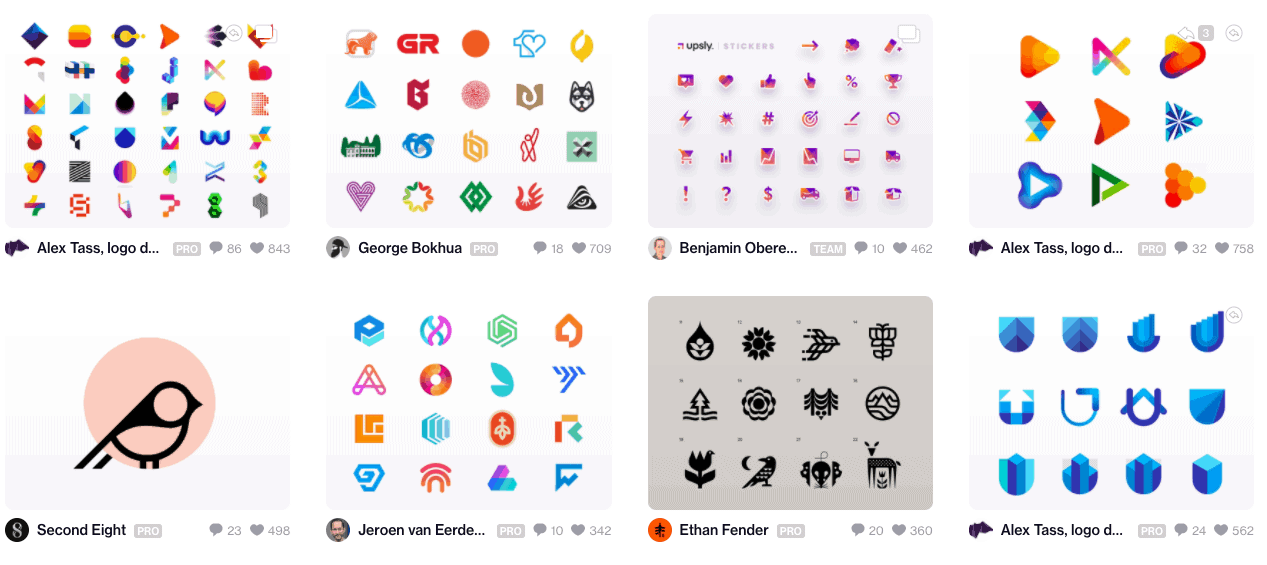
Mascots
One of the most exciting ways to personalise your brand is to use mascot logos. They normally feature cartoonish, colourful, and fun characters, resulting in an amicable and family-friendly logo. Perhaps the best example of mascots is the logo of Hostgator, a website hosting company in the States.
Abstract Logo Marks
Abstract logos enable you to design a unique as well as an entirely new image for your brand instead of repurposing existing images and icons. The image will be truly exclusive to you, making your brand even more recognisable. Understanding different geometric figures will help you further create a specific atmosphere, feeling, or mood through an abstract logo.
6
How To Choose The Right Colours For Your Logo
The next step is to choose the right colours for your logo. Keep in mind that every colour has a different meaning. You can also express different ideas and emotions by using certain colours in your logo. It is not a very cumbersome task to pick colours, especially if you have already defined your brand’s features, mission, purpose, and guidelines.
Some people design their logo in a single colour only. However, you must experiment with more than one colour to determine which combination works best for you. Whatever colours you choose, they should tell the complete story of your brand.
There are usually only three types of colour combinations for logos which are as follows.
Complementary Colours
Complementary colours appear directly across each other on the logo. It is best to use only two colours in this kind of colour combination. Rest assured, both the colours look very dynamic and bring the best in each other.
Analogous Colors
Analogous combination mostly consists of three colours that lie side by side on the logo. These colours make your logo more harmonious and beautiful.
Triadic Colours
Triadic colours give a bold and stimulating look to your logo. You would normally use these colours in three equal sections on your logo, also making it a bit more organised and orderly.
Choose Appropriate Colours for Your Industry
It is also important to choose industry appropriate colours. For example, the colour yellow radiates feelings of happiness, confidence, optimism, encouragement, and amusement. Many companies, especially in the food industry (McDonald’s and Subway), automotive (Ferrari), and technology (Nikon) businesses have used yellow in their logos to great success. Yellow is also a great attention grabber and crowd favourite.
Red is another popular colour and it stands for excitement, strength, energy, power, and passion. You can also use classic colour combinations such as red and yellow and red and white to denote love, courage, and celebration. Red also boosts hunger and creates urgency resulting in impulsive shopping. That is why, companies such as Levi’s, Coca Cola, Lays, Canon, KFC, and Kit Kat have red in their logos.

Some other common colours found in logos are green, blue, silver, brown, black, white, and grey. However, try not to use more than three colours because multiple colours make your logo confusing, disorganised and vague.
Your chosen colours must be compatible with your business and the target audience. For example, you must use brighter or darker colours which represent passion and energy if your customers are mostly young people. For senior citizens, try to pick light and soothing colours instead.
7
How To Choose A Good Font For Your Logo
Your logo’s text will have secondary importance as long as your logo is primarily a symbol or monogram. You still need a font that can easily carry your company’s name if you ever want to use it independently on your logo.
Not many people pay attention to the logo’s font which is a mistake. The choice of font can make or break your logo. It says a lot about your brand and therefore, you must keep generic fonts at bay. Never use fonts such as Lucida Handwriting, Times New Roman and Comic Sans as they are too common.
The two types of fonts you can choose from are Serif with stems or Sans Serif with no stems on letters. Both free and paid fonts are available. The best place for free fonts is Google Fonts. However, a lot of designers, companies, and websites use their fonts. Therefore, finding a custom font for your logo is rather difficult. On the other hand, you can buy some really good yet inexpensive fonts from websites like Creative Market. They offer a wide range of affordable custom fonts for every kind of use.
8
How To Design a Logo on a Free Design Platform
The next step after picking the style, type, colours and fonts is to design your logo. The logical step to take at this stage is to hire an experienced logo designer from websites such as 99designs.com. Alternatively, you can use numerous resources, software and websites to create a logo yourself. Some of these resources such as Photoshop are paid. However, there are also some fantastic free tools you can use to design your logo.
You can start with Squarespace’s logo Maker if you are looking for a modern and minimalist logo. Creating a logo on Squarespace is extremely straightforward. Just go to the homepage of SquareSpace logo maker, enter your brand name, select a tagline, and search for relevant symbols if you want to include any. Now, you have a very basic logo to work with. You can further customise features like font family and style, fonts’ and symbol colours as well as the layout, alignment and size of the shapes and text. Finally, Squarespace also allows you to download your logo in low or high resolution for free.
Similarly, Hatchful by Shopify helps you design a perfectly good logo from start to finish by asking questions about your preferences all the while giving helpful tips along the way. It is particularly useful for people with no idea of how to proceed or those who are stuck at a certain stage of logo making.
You can also use Canva which in my opinion, is the best and most popular free DIY logo design tool. Creating a logo on Canva is also a breeze. Below I will walk you through the process of designing a logo on Canva.
Creating a Logo with Canva
Start by creating your free account on Canva. Subsequently, you will get a blank white canvas once you log in. There are also lots of templates to choose from on the right hand bar. Browse through these templates and choose one which suits your brand. You can also customise your chosen template according to your logo requirements, guidelines and colour choices.
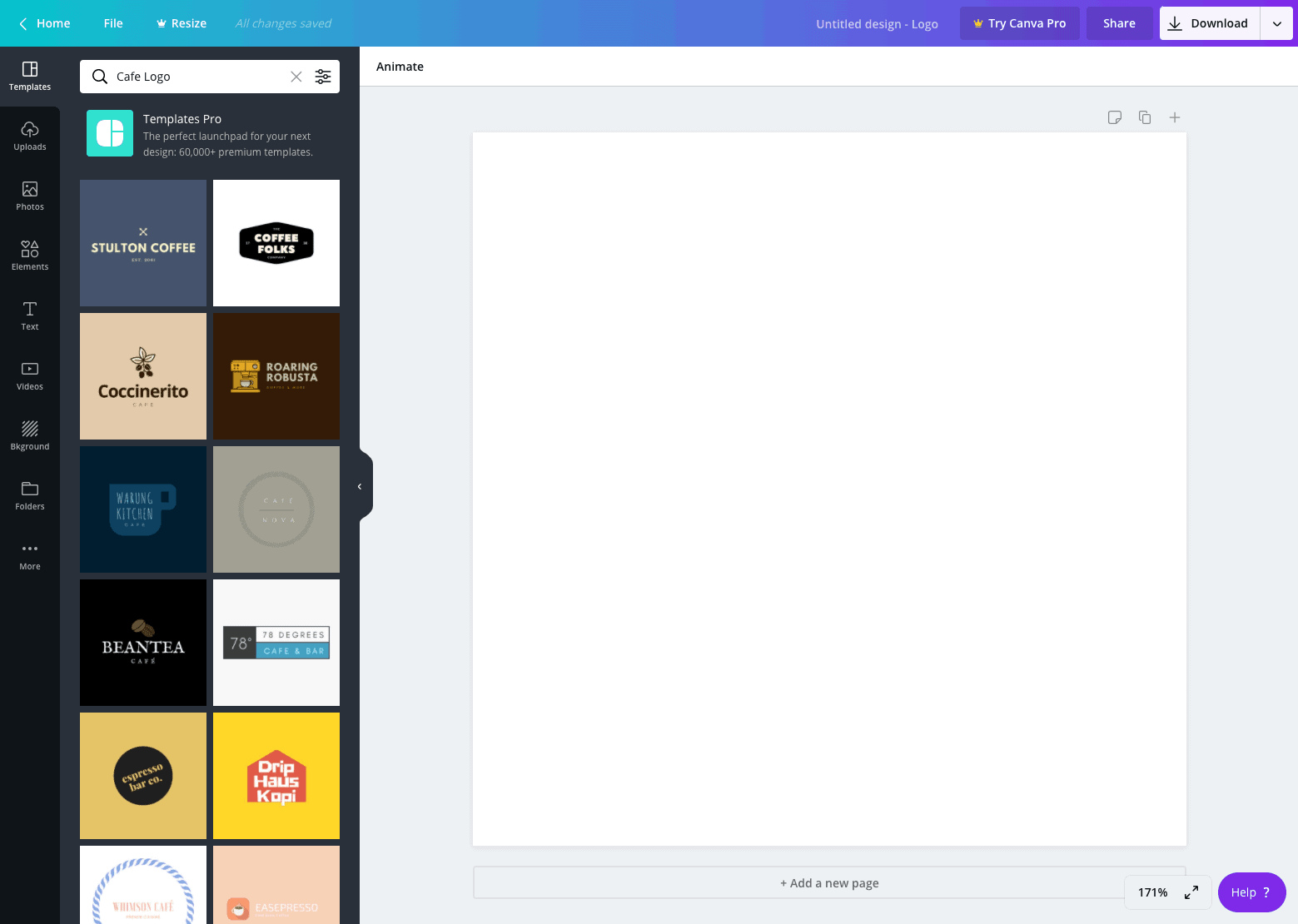
Alternatively, you can go straight to the Elements tab to design a logo from scratch. The Element tab offers you a large selection of icons and graphics. Once again, explore through them to choose the best icon or graphic for your logo. You can also customise the position, colours and opacity of each icon.
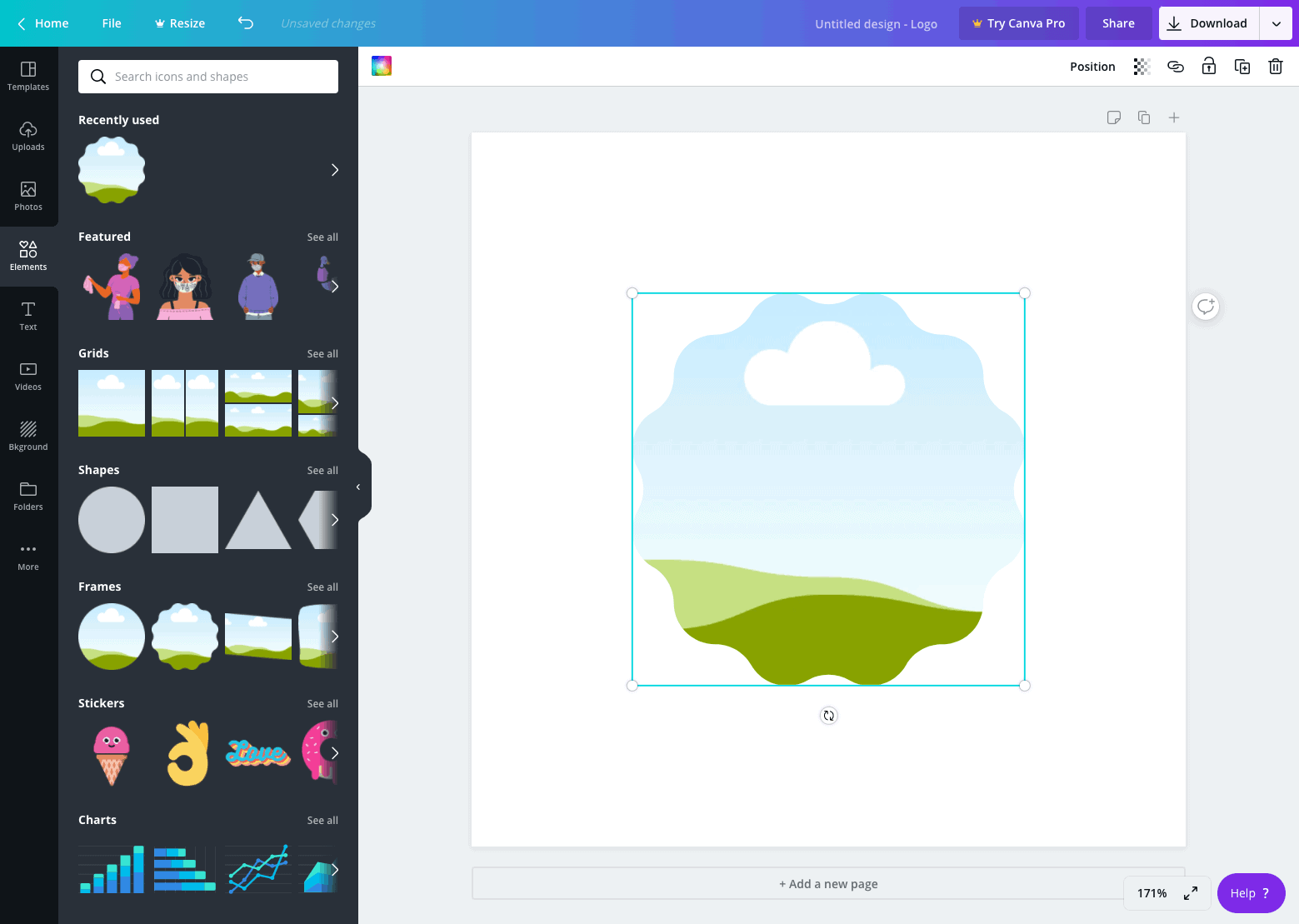
Also, explore the Text tab if you want to create a text based logo. This tab provides you with different text compositions allowing you to experiment with different font hierarchies and combinations as well as preview the results. You should ideally have a clear idea of your text composition beforehand. It will help you add text to your art board and start styling it straight away.
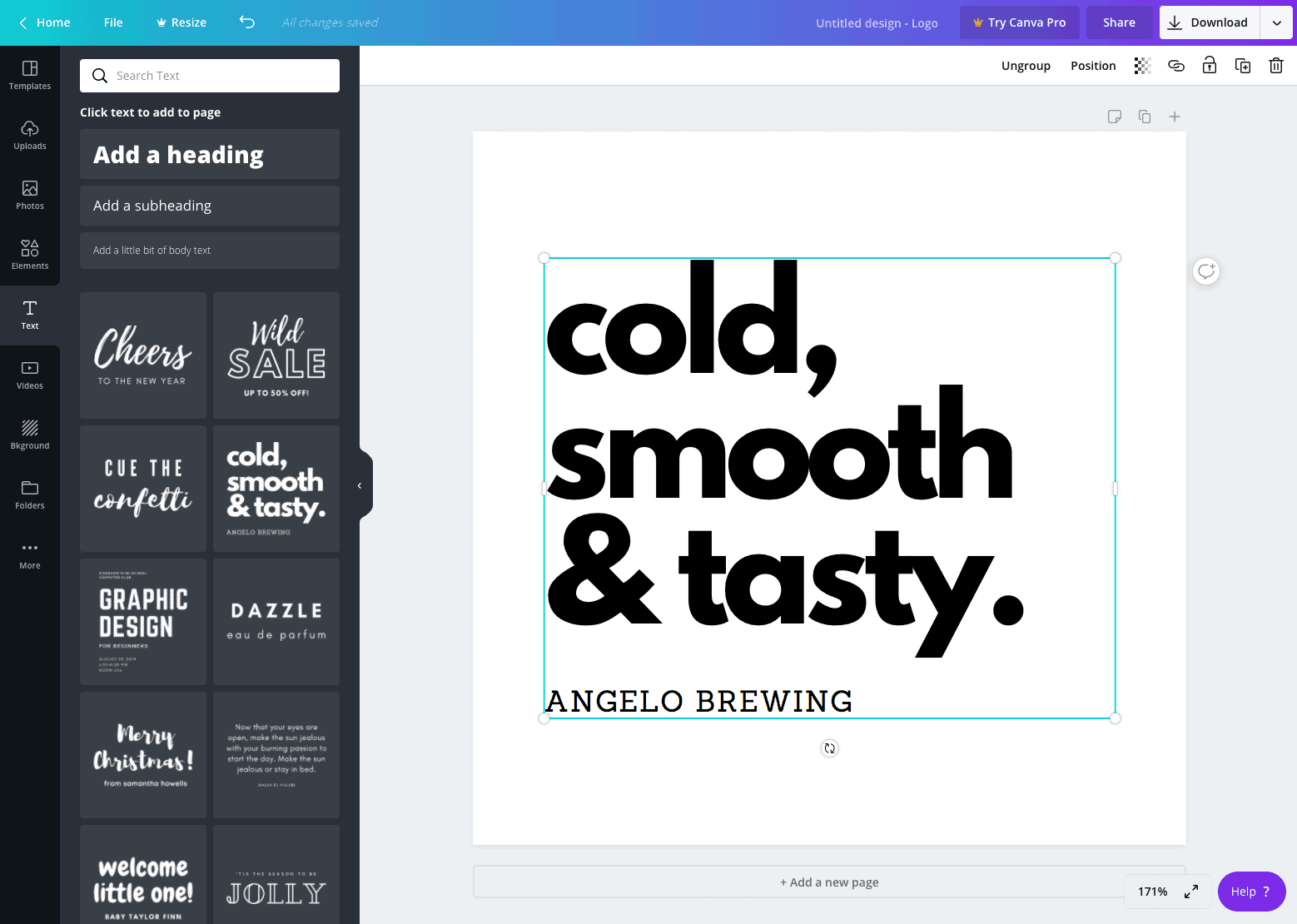
Canva also allows you to customise each font in the Fonts tab. Some of the features you can change include text size and colours. You can also upload additional fonts to Canva if you can’t find the right font to use from their collection.
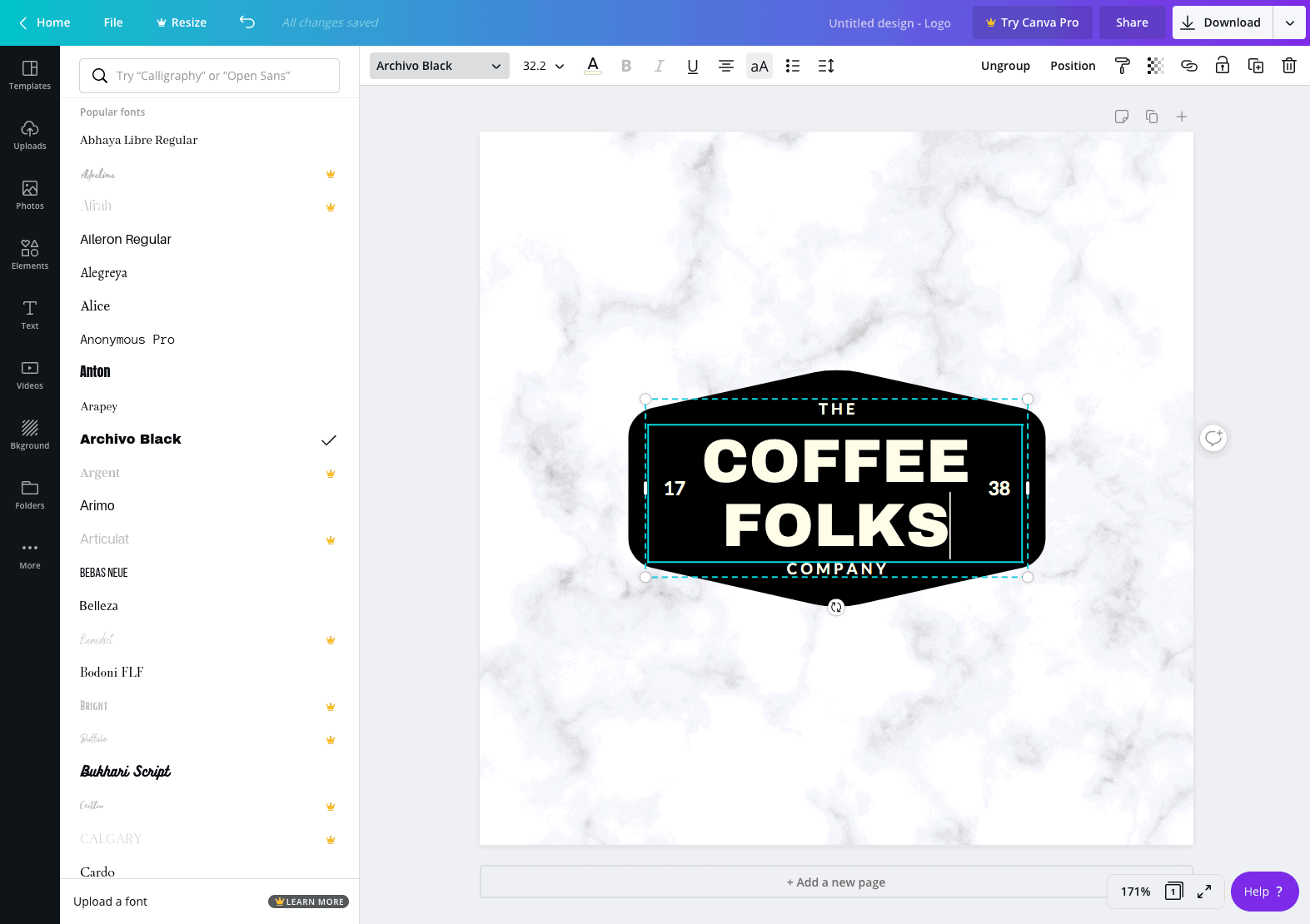
Canva has a Download button in the top right corner to import the logo. All you need to do is select the file type and click the button and boom, you have created your very first logo.
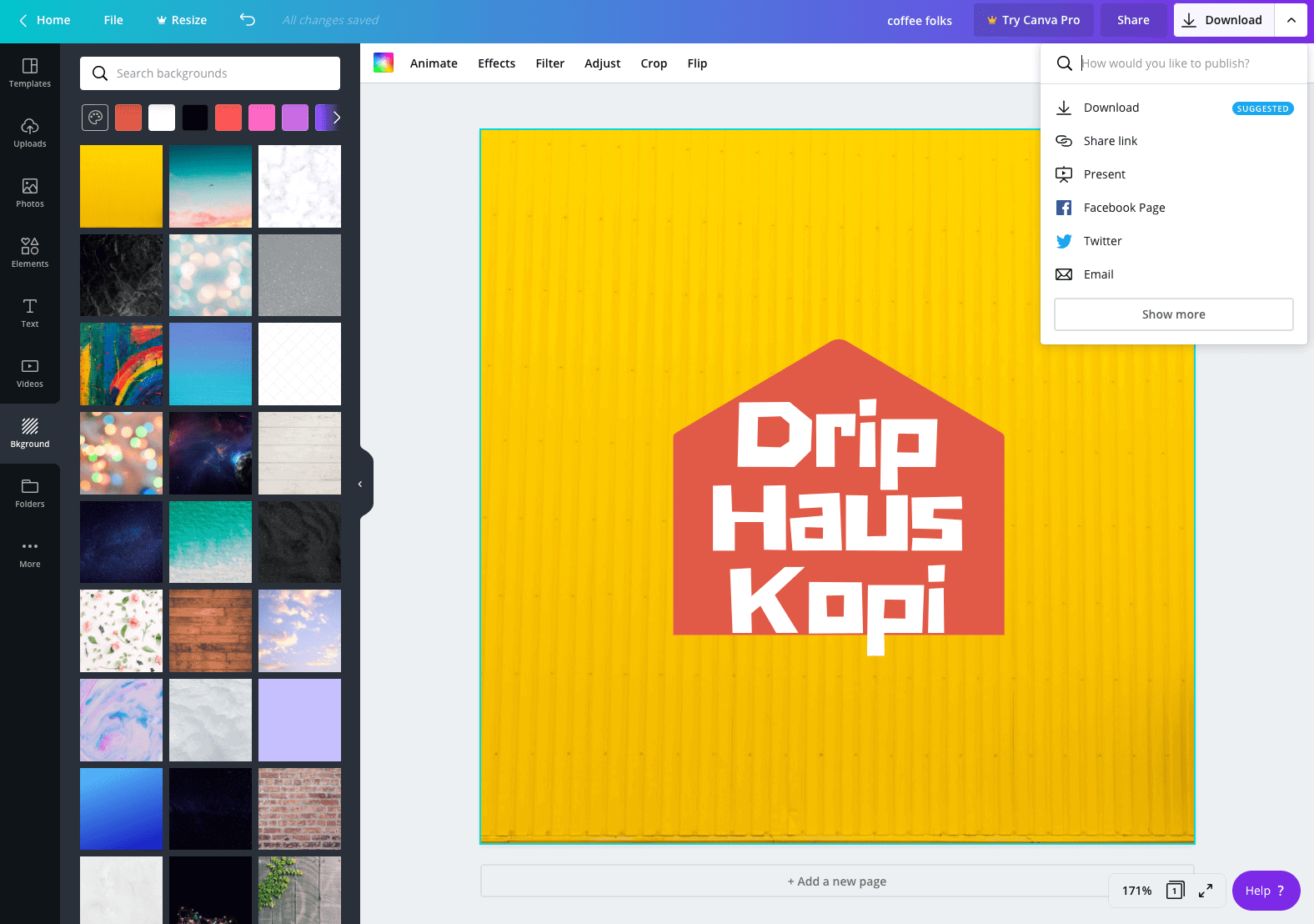
9
Striving For Perfection
Your logo is the basic branding material for your business and therefore, it should be flawless. The only way to check whether or not your logo can present you as a new and exciting venture is to integrate it on every marketing item such as your website, business cards, and brochures, etc.
You may not get the logo you want on the first attempt. You have to give it a few tries before you get it perfect, especially if you are not an experienced logo designer. Don’t give up if your first attempt did not yield the desired results. Keep working hard and keep trying until you succeed.
You have two options if you are not satisfied with your first logo. You can either start from scratch again or just introduce necessary changes to the design. For example, you can change fonts, shapes, or colour palettes to see if they work the second time around. You can also try a new design tool altogether with a lot of templates and pre-made designs. They can greatly help you get the perfect logo.
You have to repeat the whole process from taking inspiration to designing a logo if you decide to recreate the logo from scratch. Reiterating the whole process, again and again, will not only enable you to create your ideal logo but also improve your design skills.
10
Upload Your Logo to Your Website
It’s really easy to upload a logo to your WordPress website. First of all, you have to sign in to the WordPress dashboard. Now, go to left side menu, click on Appearance and then Customise.
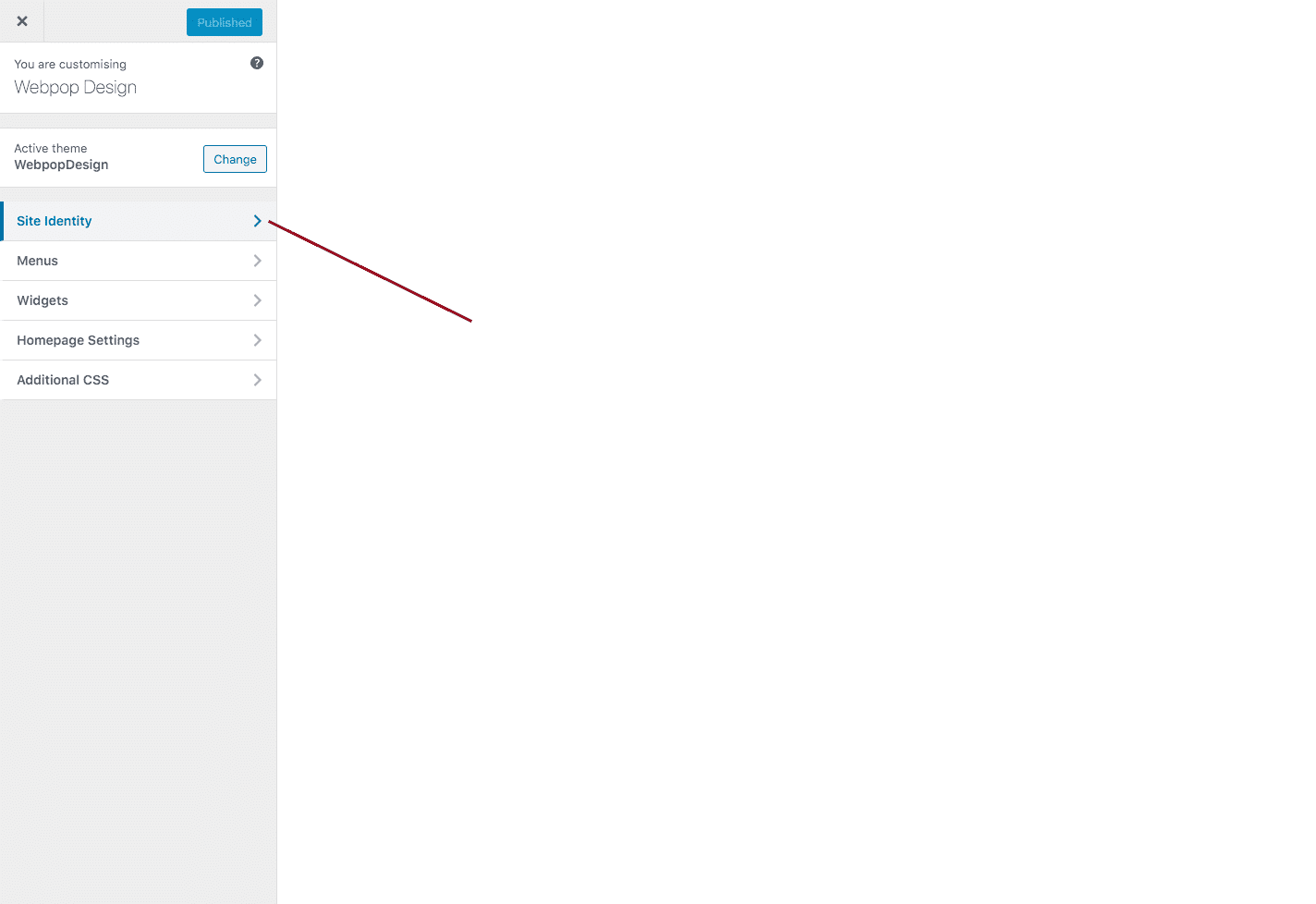
Different WordPress themes have different settings. However, all of them have the Site Identity tab in the Customisation area. You will come across different website settings within the Site Identity tab, including the option to upload or re-upload your logo.
Click the Publish button at the top once you have uploaded the logo. Now, your visitors can see your new logo on your website.
Wrapping Up
So there you have it, that was my DIY guide to designing a logo. I hope you have found it helpful. Logo design software and logo design services has come on leaps and bounds are so much more accessible now and better quality than they used to be. Follow this guide step-by-step and you will have yourself a logo in no time.
However. If you are still struggling to design a good logo using Canva, I’d highly suggest using a service like 99designs. You can set a “prize” amount reward and get hundreds of logo designers all battling out to design the perfect logo for you. At the end, you’ll have wide selection to choose from and at an affordable rate.